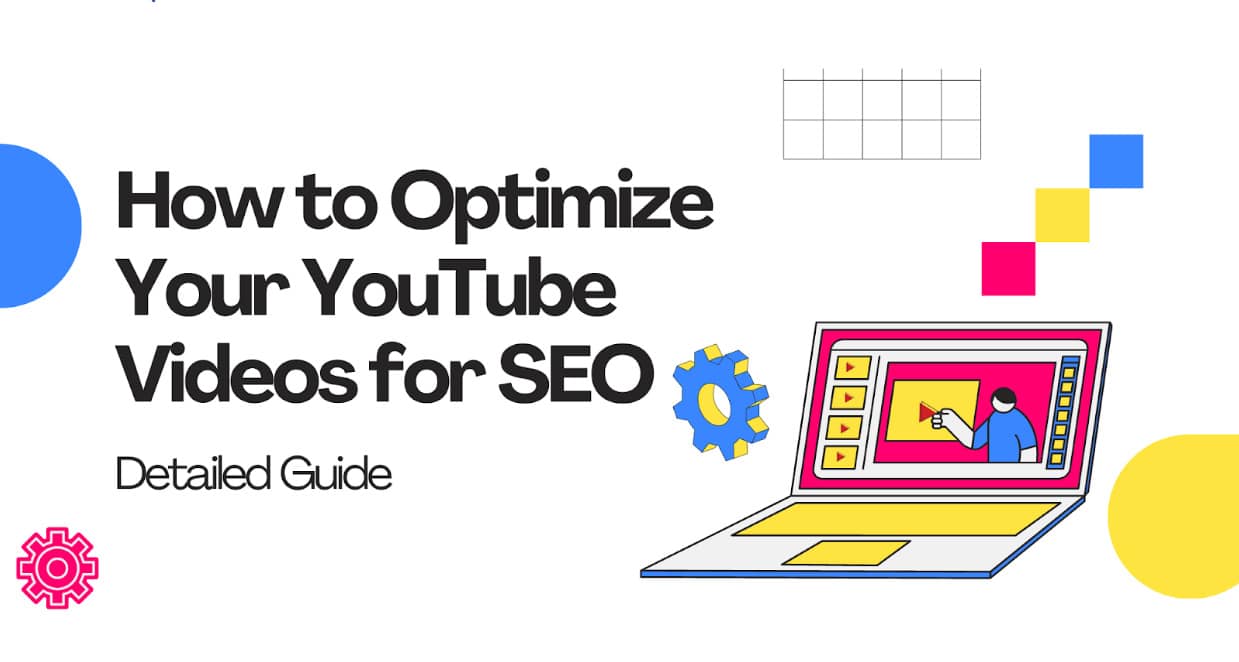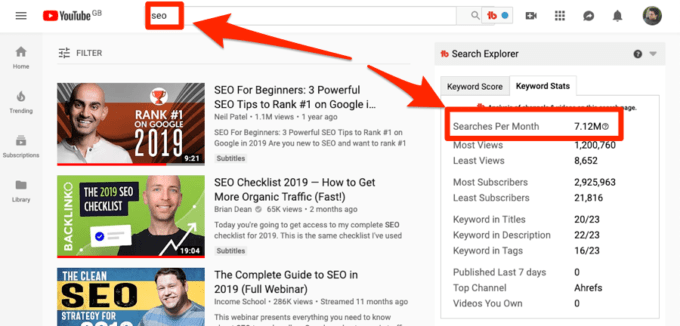How to Optimize YouTube Videos for SEO: A Comprehensive Guide

In the vast ocean of digital content, YouTube stands out as a behemoth. With over 2 billion monthly logged-in users, it's a platform teeming with opportunities for creators and businesses alike. But with great opportunity comes great competition. So, how do you ensure your videos stand out and reach your target audience? The answer lies in optimizing your YouTube videos for SEO. Let's dive in and explore how to make your videos shine in the YouTube search results.
Understanding YouTube SEO
YouTube SEO is the process of optimizing your videos to increase their visibility in YouTube's search results. It's similar to traditional SEO but tailored to the unique environment of YouTube. The ultimate goal? To drive more organic traffic to your videos and grow your audience.
Keyword Research: The Foundation of YouTube SEO
Just like traditional SEO, YouTube SEO begins with keyword research. You need to find relevant YouTube keywords that your target audience is searching for. Here's how:
- YouTube Autosuggest: Start typing in the YouTube search bar and see what suggestions pop up. These are popular search terms.
- Competitor Analysis: Look at what keywords your competitors are using in their video titles and descriptions.
- YouTube Keyword Tools: Use tools like TubeBuddy, vidIQ, or the YouTube Keyword Tool to find relevant keywords and their search volume.
Optimizing Your Video Title
Your video title is the first thing viewers see, so it needs to be compelling and keyword-rich. Here's how to craft a perfect title:
- Include Your Primary Keyword: Make sure your main keyword is at the beginning of the title.
- Keep It Concise: YouTube recommends keeping titles to 60 characters or fewer.
- Make It Engaging: Use powerful language that entices viewers to click.
For example, if your keyword is "chocolate cake recipe," your title could be "Easy Chocolate Cake Recipe - Moist & Delicious!"
Writing a Compelling Video Description
The video description is where you can provide more context about your video. It helps YouTube understand your content better and can also drive traffic to your website. Here's how to write a great description:
- Include Your Primary Keyword: Make sure your main keyword appears in the first 25 words.
- Make It Detailed: Write a description of at least 250 words, including relevant keywords and links to your website or social media profiles.
- Use Timestamps: These can help viewers navigate your video and improve user experience.

Mastering Video Tags
Video tags are another way to provide context to your videos. They help YouTube understand your video's content and can improve discoverability. Here's how to use them effectively:
- Use a Mix of Broad and Specific Tags: Include broad tags to increase reach and specific tags to target niche audiences.
- Include Your Primary Keyword: Make sure your main keyword is one of your tags.
- Use 30-40 Unique Tags: The more relevant tags you include, the more opportunities you have to rank.
Thumbnail Optimization: The Visual Click Magnet
Your thumbnail is like a book cover - it needs to be eye-catching and relevant. Here's how to create compelling thumbnails:
- Use High-Quality Images: Your thumbnail should be clear and visually appealing.
- Include Text: Adding text to your thumbnail can help convey your video's topic.
- Be Consistent: Use a consistent style or format for your thumbnails to build brand recognition.
Engaging with Your Audience
Engagement signals like likes, shares, comments, and view duration can significantly impact your video's ranking. Here's how to boost engagement:
- Encourage Viewers to Like, Share, and Comment: Include calls-to-action in your videos encouraging viewers to engage.
- Respond to Comments: Show your audience that you value their input by responding to comments.
- Create High-Quality Content: The better your content, the more likely viewers are to engage with it.
Leveraging YouTube Analytics
YouTube Analytics is a powerful tool that provides insights into your video's performance. Here's how to use it to improve your SEO:
- Monitor Your Traffic Sources: See where your views are coming from to understand what's working and what's not.
- Analyze Audience Retention: Understand where viewers are dropping off to improve your content strategy.
- Track Your Keyword Performance: See which keywords are driving the most traffic to your videos.
Building Backlinks and Promoting Your Videos
Just like in traditional SEO, backlinks play a crucial role in YouTube SEO. Here's how to build backlinks and promote your videos:
- Embed Your Videos: Embed your videos on your blog or website to generate backlinks.
- Share on Social Media: Promote your videos on your social media channels to drive traffic.
- Collaborate with Other Creators: Partnering with other creators can help you reach a wider audience and gain backlinks.
Conclusion: Your Journey to YouTube SEO Success
Optimizing your YouTube videos for SEO is a journey, not a destination. It requires continuous effort, experimentation, and adaptation. But with the right strategies and a deep understanding of your audience, you can significantly increase your videos' visibility and grow your channel.
Remember, YouTube SEO is about more than just keywords and tags. It's about creating valuable content that resonates with your audience and encourages them to engage. So, keep experimenting, keep learning, and most importantly, keep creating.
FAQs
How Long Does It Take for YouTube SEO to Work? YouTube SEO is a long-term strategy. While you might see some results within a few days, it can take weeks or even months to see significant improvements.
Can I Change My Video's Title and Description After Publishing? Yes, you can change your video's title and description at any time. However, be cautious about changing the title too often as it can confuse viewers and YouTube's algorithm.
How Many Tags Should I Use for My YouTube Videos? YouTube allows up to 500 characters for tags, which is roughly 30-40 tags. Use a mix of broad and specific tags to maximize your reach.
How Important is Watch Time for YouTube SEO? Watch time is a crucial ranking factor for YouTube. The longer viewers watch your videos, the more likely YouTube is to promote them.
Should I Buy Views or Subscribers to Boost My YouTube SEO? No, buying views or subscribers is against YouTube's policies and can harm your channel's reputation and SEO. Always focus on growing your audience organically.
Belum ada Komentar untuk "How to Optimize YouTube Videos for SEO: A Comprehensive Guide"
Posting Komentar